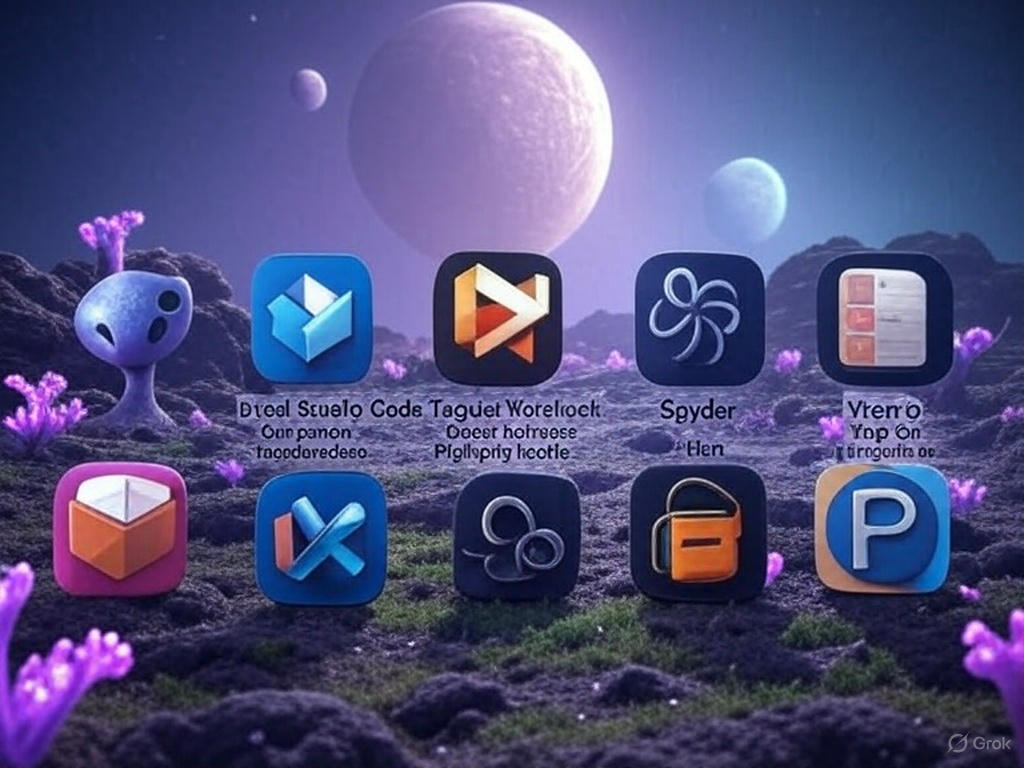The JSON file format has emerged as a pivotal force of data exchange and application development. Short for JavaScript Object Notation, JSON has become a global standard for storing, transmitting, and exchanging data between a server and a client. Its simple, lightweight, and easy-to-read structure has revolutionized the way developers design web APIs, communicate between systems, and build applications that are scalable and efficient.
Whether you’re dealing with mobile applications, websites, APIs, or backend services, chances are that you have encountered JSON at some point. Thanks to its flexibility and adaptability, it has quickly surpassed older formats like XML in many areas. What makes JSON truly stand out is its text-based, human-readable format, which is easy to write, debug, and maintain. It is language-independent but uses conventions that are familiar to programmers of the C family of languages, including C, C++, C#, Java, JavaScript, Perl, Python, and many others.
The rise of RESTful APIs, NoSQL databases like MongoDB, and serverless applications has further accelerated JSON’s dominance. In the era of cloud computing, IoT, and microservices, the importance of JSON cannot be overstated. Businesses, developers, and even large tech giants depend heavily on JSON for creating seamless and efficient digital ecosystems.
But why has JSON become so indispensable in modern programming? How does it impact technology? What specific fields does it cater to? This article will take you on an in-depth journey, exploring every critical aspect of the JSON file format. From its origins to its contemporary significance, from exclusive facts to top FAQs, we will cover everything you need to know about JSON.
Whether you are a budding developer, a tech enthusiast, or simply someone curious about modern data formats, this guide will serve as a comprehensive resource.
Table of Contents
1. Writing JSON to a File in Python.
2. Reading JSON from a File in Python.
3. Bonus: Working with JSON Strings (without file)
Top 10 Exclusive Facts About JSON..
What is JSON?
JSON (JavaScript Object Notation) is a lightweight data-interchange format that is both easy for humans to read and write and easy for machines to parse and generate. It uses a text format that is completely language-independent but is based on a subset of the JavaScript programming language.
JSON structures data through two universal structures:
- A collection of name/value pairs (often called an object)
- An ordered list of values (often called an array)

These simple structures allow for complex data to be organized in a way that is both intuitive and efficient.
A typical JSON object looks like this:
{
"name": "John Doe",
"age": 30,
"isEmployed": true,
"skills": ["JavaScript", "React", "Node.js"]
}Each data piece is neatly packed in key-value pairs, making data transmission between client and server extremely efficient.
Areas JSON Focuses On
JSON’s versatility has led it to become a central player in several technological sectors. Here are the key areas it focuses on:
1. Web Development
JSON is the backbone of most RESTful APIs. Web applications use JSON to send and receive data from servers, making it a cornerstone of modern internet functionality.
2. Mobile Applications
Mobile apps, whether on Android or iOS, rely heavily on JSON for exchanging information between client and server.
3. APIs
JSON has become the universal standard for APIs, particularly REST APIs, which require lightweight and quick data interchange formats.
4. IoT Devices
Internet of Things (IoT) devices use JSON to communicate with servers, apps, and each other because of its compact and readable format.
5. Data Storage
Several NoSQL databases, notably MongoDB, use JSON-like structures (BSON) to store data internally.
6. Configuration Files
Many modern applications, tools, and frameworks use JSON files for configuration settings, replacing bulky XML files.
7. Serverless and Cloud Applications
JSON is extensively used in serverless architectures where events and data need quick serialization and deserialization.
The Impact of JSON
The impact of JSON on technology cannot be overstated. Here’s how JSON has reshaped the tech landscape:
- Simplified Web Development: It has dramatically reduced the complexity of exchanging information between browsers and servers.
- Enhanced API Design: JSON’s clarity has led to the explosion of public and private APIs, allowing businesses to integrate services faster.
- Speed and Performance: JSON parsing and generation are incredibly fast, contributing to faster app and website performance.
- Reduced Bandwidth Usage: Its lightweight nature has minimized the amount of data transmitted, saving costs and speeding up processes.
- Global Standardization: JSON has created a common language for different systems, regardless of their underlying technology stack.
Why JSON is Important
JSON is important because it offers:
- Simplicity: Its syntax is straightforward, requiring minimal effort to learn and implement.
- Flexibility: JSON can represent complex hierarchical data structures without becoming cumbersome.
- Interoperability: JSON works across virtually every programming language and platform.
- Adoption: Its widespread usage ensures that there is a wealth of tools, libraries, and community support available.
- Speed: It enhances the speed of application development and data transmission.
Without JSON, the modern web, mobile applications, and many cloud services would not be as fast, scalable, or efficient.
Simple JSON examples
Here’s a simple, real-world example of how you can use JSON file format with Python:
1. Writing JSON to a File in Python
import json
# Data you want to save in JSON format
employee_data = {
"name": "Alice",
"age": 28,
"department": "Engineering",
"skills": ["Python", "Django", "Machine Learning"],
"full_time": True
}
# Writing JSON data to a file
with open('employee.json', 'w') as file:
json.dump(employee_data, file, indent=4)
print("Data has been written to employee.json")✅ This creates a file called employee.json with the structured data.
2. Reading JSON from a File in Python
import json
# Reading JSON data back from the file
with open('employee.json', 'r') as file:
data = json.load(file)
print("Data loaded from file:")
print(data)✅ This will load the JSON back into a Python dictionary you can work with.
3. Bonus: Working with JSON Strings (without file)
If you have a JSON string (say, received from an API) instead of a file:
import json
# A JSON string
json_string = '{"name": "Bob", "age": 35, "department": "Sales"}'
# Parse JSON string into Python dictionary
employee = json.loads(json_string)
print("Employee Name:", employee['name'])
print("Employee Department:", employee['department'])✅ Here, json.loads() is used to load from a string, while json.load() is used to load from a file.
Quick Recap of Functions
| Function | Usage |
| json.dump(obj, file) | Write JSON object to a file |
| json.load(file) | Read JSON object from a file |
| json.dumps(obj) | Convert Python object to JSON string |
| json.loads(str) | Convert JSON string to Python object |
Top 10 Exclusive Facts About JSON
- Not Tied to JavaScript: Despite its name, JSON is language-independent and works seamlessly with Python, Java, C#, PHP, and many others.
- Born from Simplicity: JSON was created by Douglas Crockford in the early 2000s with simplicity and human readability in mind.
- Accepted by Major Organizations: JSON is recognized officially by standards bodies such as ECMA and IETF.
- Used for Configuration: Many systems use .json files to manage environment settings, replacing .xml and .ini formats.
- Database-Friendly: JSON-like documents form the basis of NoSQL databases like MongoDB and CouchDB.
- Lightweight Alternative: Compared to XML, JSON is faster to parse and less verbose, leading to smaller data sizes.
- Fully Text-Based: JSON is purely a text-based format, making it easy to transmit over any network protocol.
- Streaming Support: JSON data can be streamed and parsed incrementally for real-time applications.
- API Backbone: Companies like Twitter, Google, and Facebook predominantly use JSON for their APIs.
- Modern Language Support: Every major programming language today has built-in support or libraries for working with JSON.
Top 15 FAQs About JSON
1. What does JSON stand for?
JSON stands for JavaScript Object Notation.

2. Is JSON a programming language?
No, JSON is a data format, not a programming language.
3. What are the basic data types in JSON?
Strings, numbers, booleans, arrays, objects, and null.
4. How is JSON different from XML?
JSON is lighter, faster, and easier to read/write compared to XML.
5. Can I use JSON with Python?
Yes, Python has a built-in json library for parsing and writing JSON.
6. Is JSON case sensitive?
Yes, keys and values in JSON are case sensitive.
7. Can comments be added in JSON?
No, the standard JSON format does not support comments.
8. Is JSON faster than XML?
Generally, yes. JSON is faster to parse and generate compared to XML.
9. What are JSON files saved as?
Typically, they are saved with the .json extension.
10. How do you parse JSON?
Most languages offer built-in functions or libraries to parse JSON into usable objects.
11. Can JSON store binary data?
No, but binary data can be encoded as text (e.g., using Base64) in JSON.
12. Is JSON secure?
JSON itself is secure, but the way it is parsed and handled in applications must be secure to prevent attacks like JSON Injection.
13. Can JSON be used for APIs?
Absolutely. JSON is the standard format for RESTful APIs.
14. What are alternatives to JSON?
XML, YAML, and Protocol Buffers are common alternatives.
15. Does JSON support complex data structures?
Yes, JSON supports nested objects and arrays, enabling complex data representation.
Conclusion
In today’s interconnected digital environment, the role of the JSON file format is undeniably foundational. It has paved the way for more streamlined, efficient, and intuitive ways of exchanging information between systems, devices, and platforms. Without JSON, the development and communication between modern applications would be far more complicated and less efficient.
One of the main reasons JSON continues to dominate is its simplicity. Developers don’t have to spend unnecessary hours learning a complex syntax. Instead, they can focus on building robust applications while relying on a universally understood data format. This ease of use has contributed to the rapid development of mobile apps, cloud platforms, and IoT systems that we interact with daily.
Moreover, the importance of JSON extends beyond mere technical convenience. It has fostered a culture of openness and integration, allowing diverse systems to interact effortlessly. In a world that demands instant data access and real-time updates, JSON’s lightweight and speedy nature makes it the first choice for developers across industries.

Furthermore, with technologies like artificial intelligence, machine learning, and big data analytics gaining momentum, JSON will continue to be the format of choice for data serialization. Its adaptability ensures that as new technologies emerge, JSON will evolve alongside, maintaining its relevance and usefulness.
To summarize, JSON is much more than just a format—it’s the invisible language enabling modern digital experiences. Whether you’re a novice just getting into coding or a seasoned developer architecting complex systems, understanding and leveraging JSON is crucial. Its universality, simplicity, and efficiency make it a cornerstone of contemporary software development and data communication.
As we move deeper into an era of decentralized and interconnected systems, JSON’s prominence is only set to grow. It’s safe to say that the future will continue to be written—at least in part—in the language of JSON.
Curated Reads




